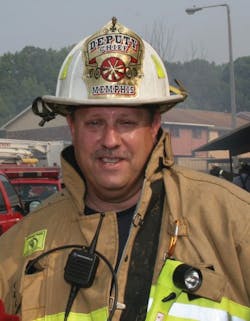EMS: It’s a New World For Fire and EMS
It’s a different world from when I started in this business. Back then, fire and EMS professionals were universally regarded as the good guys. Sure, once in a while, we’d be attacked by a patient. I have vivid memories of rocks and bricks being thrown at my vehicle in St. Louis while responding to a fire and then being at different arson fires the night Los Angeles police officers were acquitted of beating Rodney King. Over the years, we’ve even had to vacate a scene or two when shots were fired nearby or a fight broke out.
For the most part, we’re still seen as the good guys, but now emerging is a small group of people who are using violence against police and other representatives of authority, including firefighters and emergency medical personnel. Police officers who were present during both Ferguson, MO, civil disturbances following the death of Michael Brown told me that the majority of people who were arrested were not from the St. Louis area. They were outsiders who came in with the intent of causing violence. Many of the peaceful protestors were upset with the presence of the outsiders because it detracted from their message. At one point in Ferguson, the peaceful protestors stood between the police and those who wished to commit violence.
The EMS chief who handled the Ferguson civil disturbances told me that many times they could not access patients simply because the situation was too dangerous for paramedics. Chief fire officers I spoke to who handled the second Ferguson civil disturbance, when 21 buildings were burning, told me that several times they had to disconnect hoselines from engines and leave the scenes of fires because they were receiving gunfire.
Personnel in danger
In a free society such as the United States, people have the right to peacefully protest what they do not agree with. Unfortunately, there are those who wish to commit violence in response to the discussion surrounding police shootings by looting or burning buildings and even openly advocating the killing of police officers. Recent events point to the need for fire and EMS professional to have heightened awareness of what is going on around them.
A Jacksonville, FL, a firefighter was recently injured by debris kicked up by bullets fired at firefighters who were fueling an apparatus. The six firefighters were targeted in the drive-by shooting as five to six shots were fired at them. On New Year’s Eve, police in Warwick, RI, arrested a 23-year-old man who yelled at firefighters, then pulled a pellet gun on them. The Cranston firefighters were in an ambulance, stopped at a red light, when the incident occurred.
Don’t forget what happened in December 2012, when two firefighters in Webster, NY, were killed and two were wounded in an ambush when a 62-year-old man set his house and car on fire with the sole intent of killing firefighters who showed up. In June 2013, four firefighters were taken hostage by a gunman in Gwinnett County, GA, after responding to an EMS call. The gunman was eventually killed by SWAT teams.
In New York City, four medics were initially suspended after a video surfaced allegedly showing they did little to treat Eric Garner after his in-custody death. Eventually, the medics were cleared and reassigned back into the EMS system, but only after much publicity. Plenty of websites reported the allegations, but very few of them carried the information that the medics were cleared and returned to duty.
What EMS should pay attention to is how New York City Police Officers Rafael Ramos and Wenjian Liu were murdered on Dec. 20 while they were sitting in their police car on a street corner in Brooklyn
by a man who had posted messages on social media that he wanted to avenge the deaths of Brown and Garner. According to witnesses, the man walked up on the passenger side of the police car, took a shooting stance and fired through the window several times, striking both police officers in the head.
EMS and fire professionals should already maintain situational awareness on every call, but now there are new concerns that must be considered. As an example, fire risk/benefit management models that apply to fire scenarios state that we will risk our lives a lot for savable lives, etc. There are variations of these models, but maybe it is time to apply them when responding to EMS calls.
Another question that should be asked is whether your fire-EMS uniform closely resembles those of local law enforcement agencies. If so, consider changing the uniform to ensure it is easy for civilians to recognize the difference between law enforcement and non-law enforcement personnel.
It is imperative that all EMS and fire professionals go home at the end of their shift. This is true for police officers also. Only through heightened and situational awareness, changes in tactics and different thinking in different times can this be achieved.
For more news and training on EMS, visit http://EMSWorld.com/.
GARY LUDWIG, MS, EMT-P, a Firehouse® contributing editor, is the fire chief of the Champaign, IL, Fire Department. He has a total of 37 years of fire, rescue and EMS experience, including St. Louis, MO, and Memphis, TN. Ludwig is a licensed paramedic and has a master’s degree in business and management. He is a well-known author, lecturer and consultant who has successfully managed two large award-winning metropolitan fire-based EMS systems in St. Louis and Memphis. Ludwig has a total of 37 years of fire, rescue and EMS experience and has been a paramedic for over 35 years. He is past chair of the EMS Section for the International Association of Fire Chiefs (IAFC) and has a master's degree in management and business.
Connect with Gary
Facebook: Gary Ludwig
Twitter: @GaryLuds
Website: garyludwig.com
